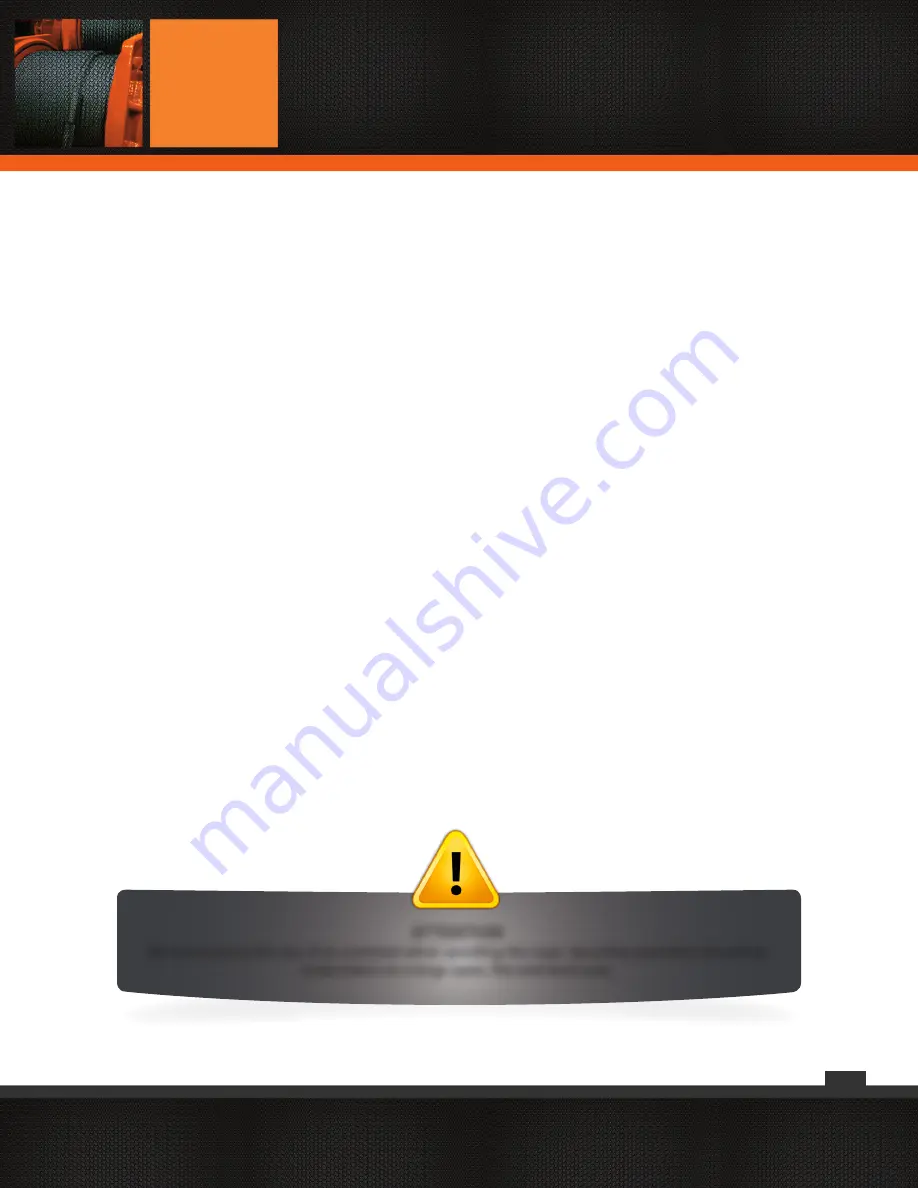
19
Installation
1) Lay out the rope in front of the vehicle ensuring there are
no twists or kinks.
2) With the winch clutch is disengaged, feed the drum termi-
nal through the front of the roller / hawse fairlead and connect
to the drum using the button head allen screw provided, this
should be finger tight only so that the ring terminal can rotate
if necessary.
3) Attach the hook end to a suitable anchor point and po-
sition the vehicle so there is at least 3 m of slack on the rope.
Apply the vehicle hand brake.
4) Holding the rope with gloved hands and at least 5 m back
from the winch apply as much pressure as you can by leaning
your body weight against the rope and walking towards the
winch whilst using the wired remote to wind in. Ensure that
each wrap lays tightly next to the other until the rope tensions
against the anchor point. There should be at least 6 wraps
around the drum.
5) The rope must be wound onto the drum from the bottom
of the drum. Using the wired remote and whilst gently apply-
ing the vehicle foot brake to maintain tension, use the winch
to pull the vehicle towards the anchor point.
During the operation, regularly stop the winch, apply the
handbrake to maintain tension and check the rope is spooling
on evenly to the winch. If you have an assistant, they should
remain in the vehicle to operate the brake, whilst you maintain
control of the winch from outside the vehicle and using the
wired remote.
6) When the rope is all but approx. 3m spooled in, using the
hand save to hold the hook, reverse the winch slightly to allow
the hook to be released.
7) Maintaining tension on the rope, pulse the remote to take
in the remaining rope and then anchor the hook onto a suita-
ble mounting point on the vehicle.
Notes
- It is important to understand that it is the first 6-8 tight wraps
around the drum and NOT the drum terminal fixing point that
allow the wire or synthetic rope to grip onto the drum.
- The drum terminal crimped onto the wire rope and its fixing
onto the drum are not load bearing, it is just designed to allow
the wire rope to be wound on under sufficient load for it to
wrap tightly onto the drum.
- When wire rope is new it is greasy and springy and can easily
unwind on the drum if tension is ever released.
- If the outer wraps of a wire rope do ‘unwind’ then you must
pull the whole rope out and re-spool under tension. Failure to
observe this will result in failure of the drum fixing.
ATTENTION
We recommend the use of an assistant when spooling the rope. Spooling operation should be
undertaken on a large open, flat and level area.
4.5 SPOOLING THE WIRE ROPE
Summary of Contents for PWTR Series
Page 1: ...1 User s Manual and Safety Warnings PWTR SERIES...
Page 26: ...26 Technical Parameters...
Page 27: ...27 Technical Parameters...
Page 28: ...28 9 1 PARTS DIAGRAM PWTR9500 PWTR13000 Parts Diagram...
Page 30: ...30 9 3 PARTS DIAGRAM PWTR15000 PWTR17000 Parts Diagram...
Page 31: ...31 Parts List...
Page 34: ...34...
Page 35: ...35...
Page 36: ...36...









































